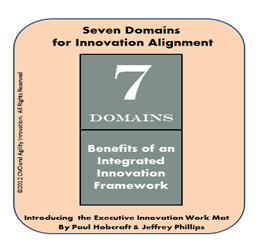 In response to a recent post of mine, Tobias Stapf on the Social Innovation Europe LinkedIn networking group, pointed me to a really good report “Innovation Is Not the Holy Grail” and
In response to a recent post of mine, Tobias Stapf on the Social Innovation Europe LinkedIn networking group, pointed me to a really good report “Innovation Is Not the Holy Grail” and
I really have appreciate it. I wanted to draw out some useful learning from this report and useful reminders here in this post that there is no easy answers in innovation, social or business related.
The report outlines the difficulties of enabling innovation in social sector organizations. In this review the authors undertook exploring what enables organization capacity for continuous innovation in established social sector organizations, that operate at an efficient scale, delivering products and services. Continue reading “There are no easy innovation answers.”








